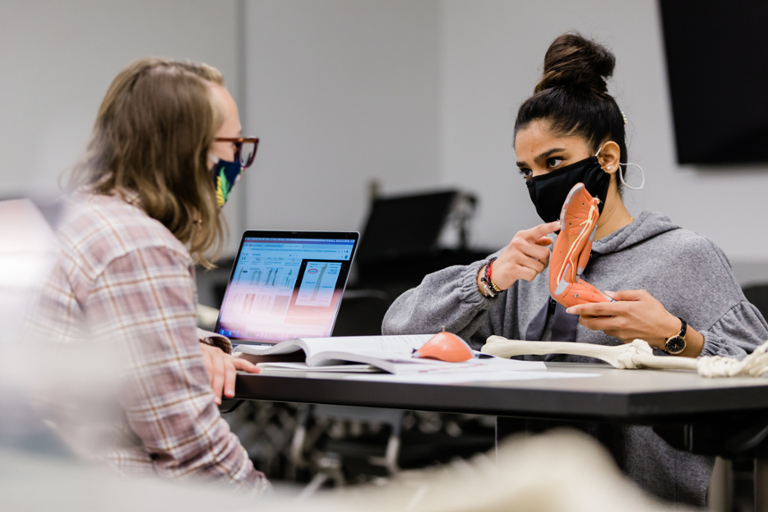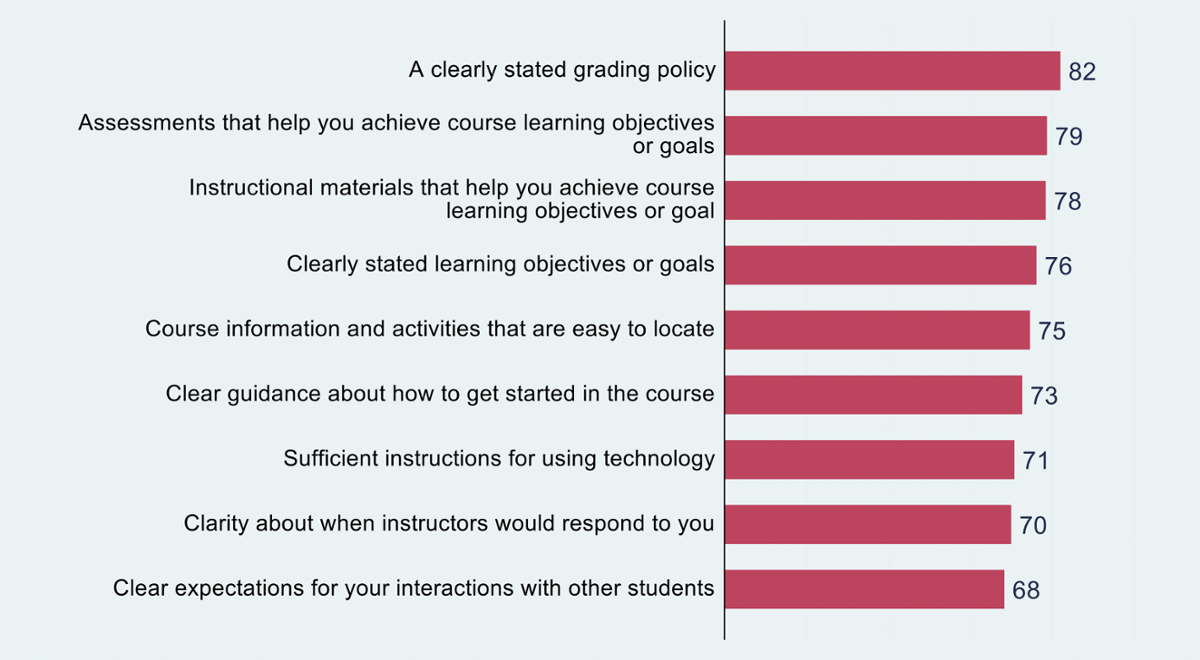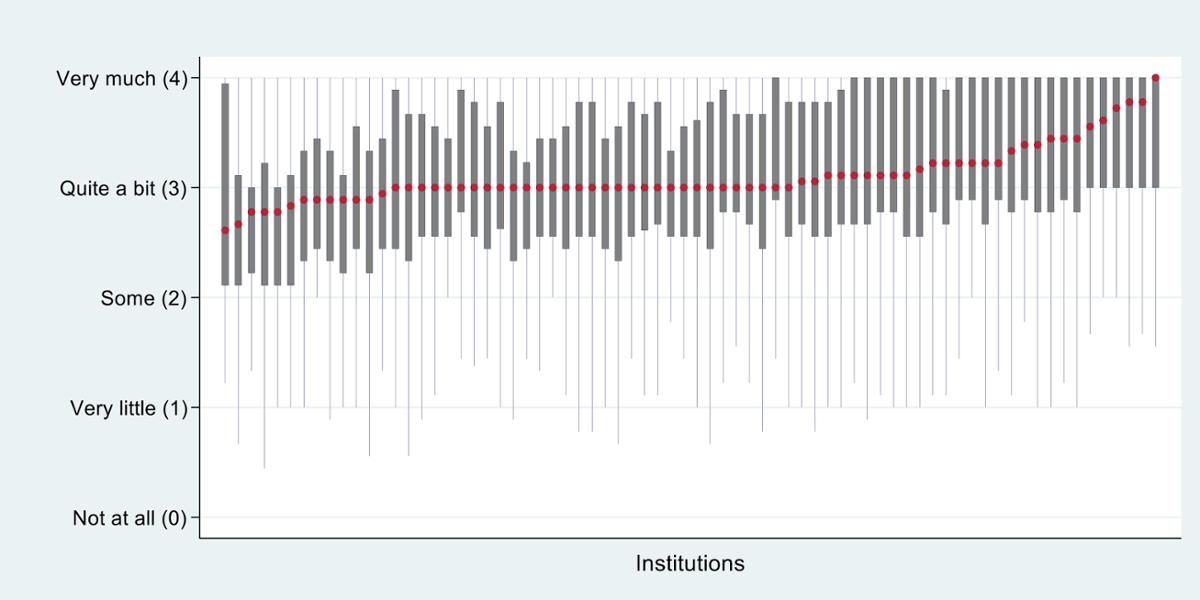Changes in Time Use
The disruptions in higher education also impacted how students allocated their time. Students spent more time on average studying and preparing for class in 2020-21, and slightly more time in 2021-22, than the typical student did prior to the pandemic. Similarly, students, especially first-years, said they spent more time working for pay off campus during the past two years than before. Somewhat predictably, students spent less time on co-curricular activities and commuting to campus than before, although these appear to be returning to pre-pandemic levels. Incoming students may have been more likely to seek part-time work off campus as they spent less time commuting and being involved in co-curricular activities.
While time spent working for pay has remained consistent among seniors—typically 16-20 hours weekly—first-year students have spent slightly more time working for pay than before, about an hour per week on average. While half of first-year students in recent years did not work at all, a greater share did in 2022, and those who worked did so more than first-year students several years ago. As more colleges and universities offer hybrid or online courses, students may find greater flexibility in their schedules to seek work opportunities off campus. Although working off-campus may be a financial necessity for some, students potentially miss out on opportunities for growth from co-curricular involvement.
A slightly larger share of students spent more than 15 hours per week—one hour per credit hour of a typical full-time student—studying, reading, writing, doing homework or lab work, analyzing data, rehearsing, and other academic activities than compared to the norm before the pandemic. Although welcome, this trend might be cooling as well, as that share of first-year students in 2021-22 (43%) more closely resembles that of earlier years (41% in 2018-19 and 2019-20) than 2020-21 (48%). As many instructors took their courses online, students could not meet in person and in turn spent more time preparing for class on their own.
Participation in high-impact practices remains below pre-pandemic norms. Participation overall suffered during pandemic restrictions, but appears to have rebounded slightly. The next Annual Results installment will examine high-impact practices more closely.





